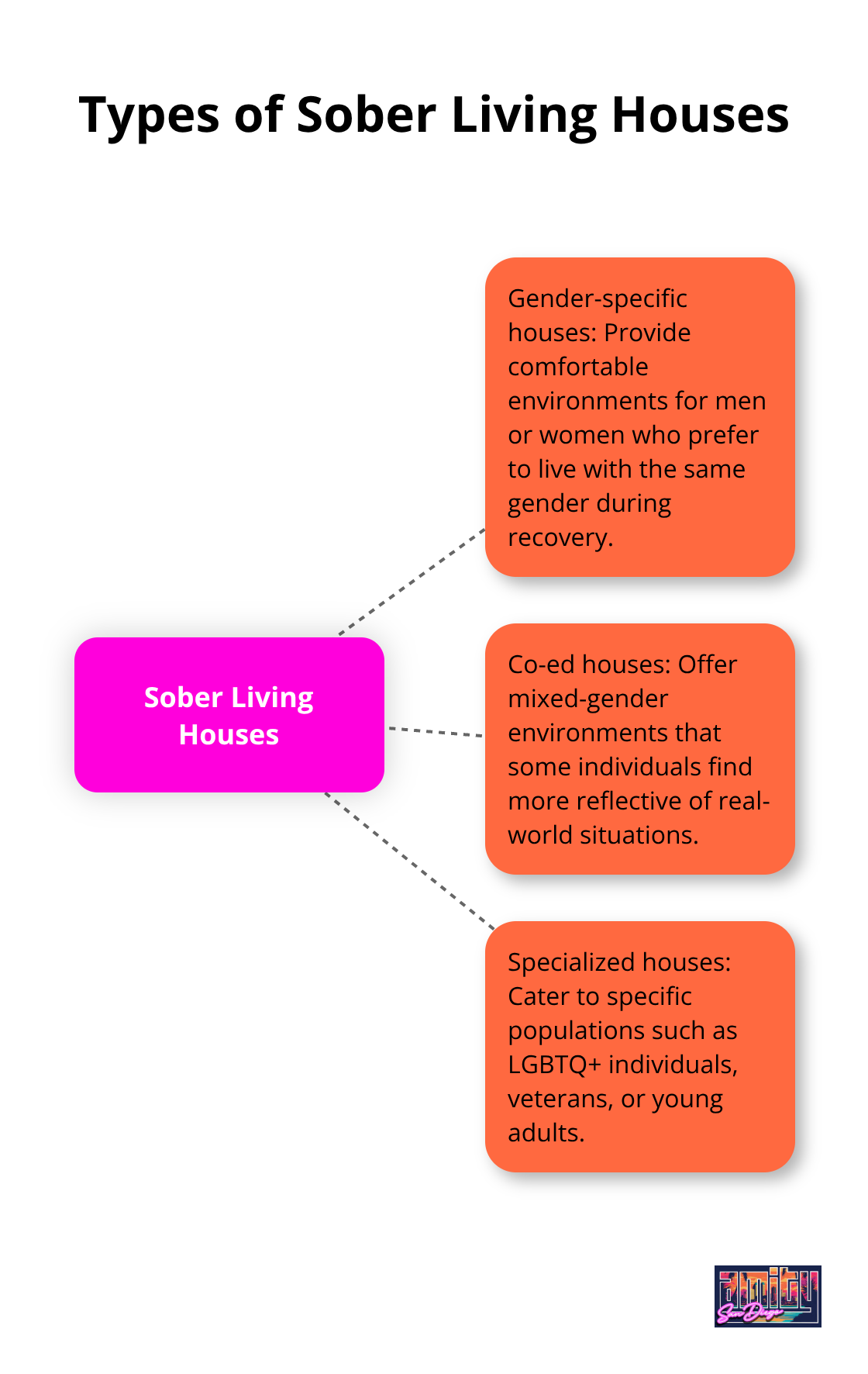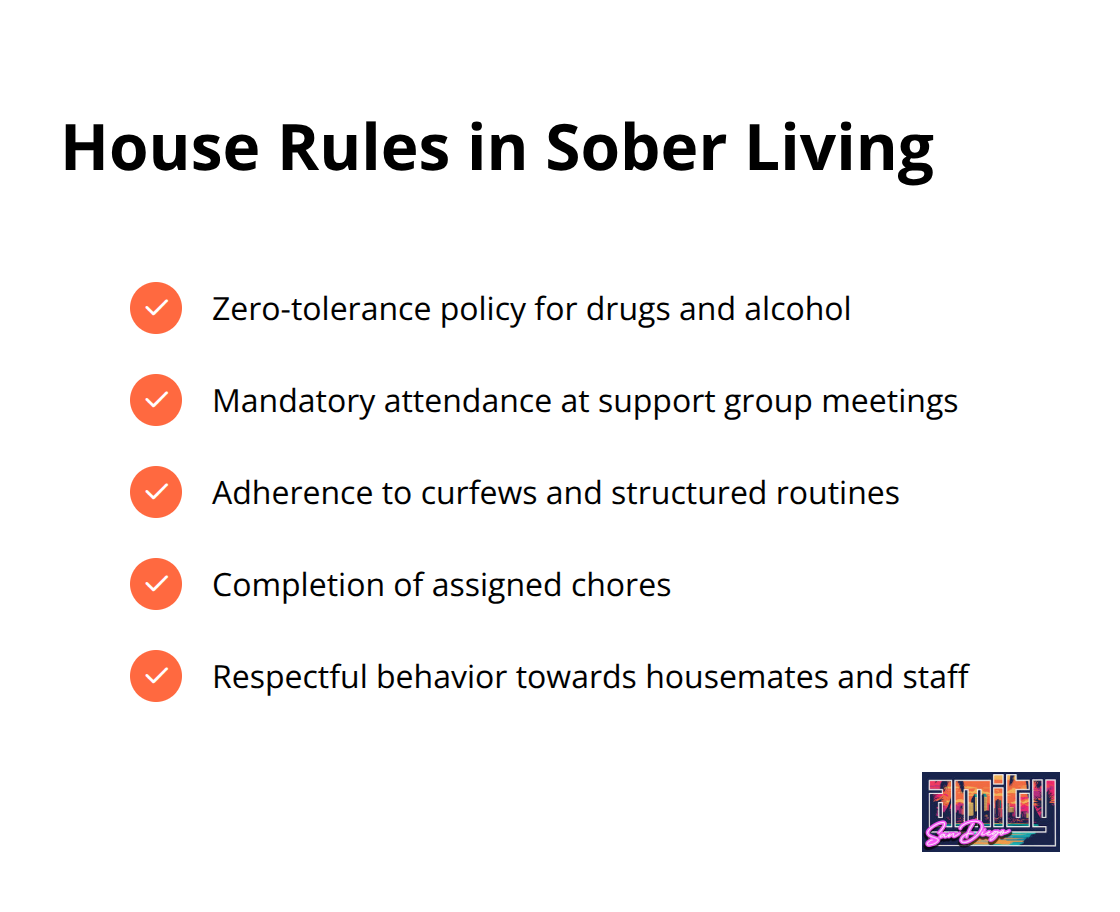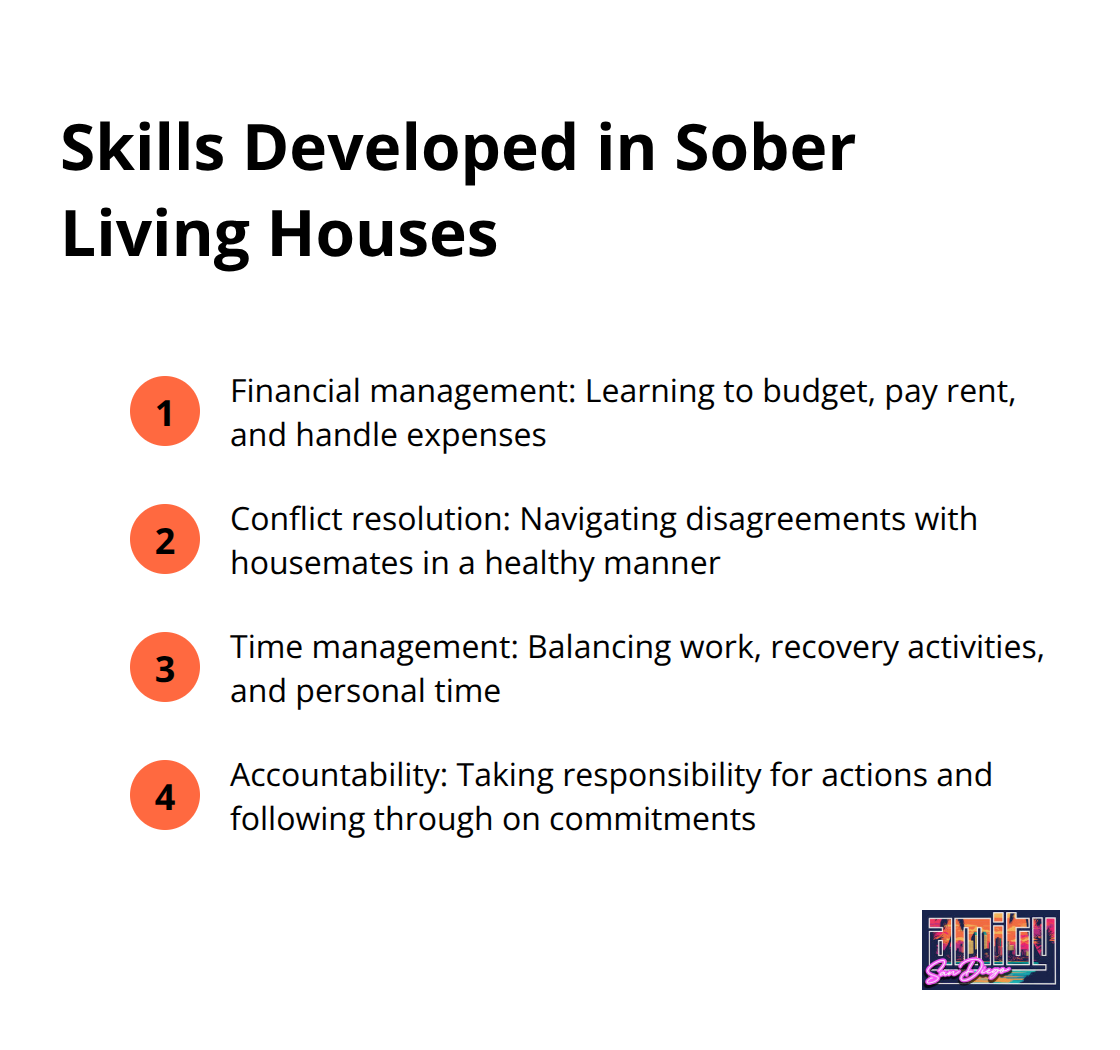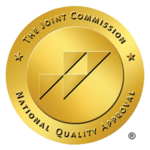At Amity San Diego, we often get asked: What is a sober living house? These transitional homes play a vital role in the recovery journey for many individuals overcoming addiction.
Sober living houses provide a structured, supportive environment for people who have completed initial treatment and are ready to take the next step towards independent living. In this post, we’ll explore how these homes work and why they’re an essential part of the recovery process for many.
What Are Sober Living Houses?
A Bridge to Independence
Sober living houses (SLHs) are alcohol and drug free living environments that offer peer support for recovery outside the context of treatment. These homes serve as stepping stones between intensive treatment and independent living. Residents pay rent, work or attend school, and participate in household chores. This setup helps individuals practice life skills and reintegrate into society while maintaining their sobriety.
Rules and Accountability
Unlike rehabilitation centers, sober living houses don’t provide formal treatment. Instead, they enforce strict rules to maintain a drug-free environment. These often include:
- Regular drug tests
- Curfews
- Mandatory attendance at support group meetings
A study published in the Journal of Psychoactive Drugs found that individuals who lived in sober homes were more likely to remain abstinent and less likely to face arrest compared to those who returned directly home after treatment.
Types of Sober Living Houses
Sober living houses come in various forms to cater to different needs:
- Gender-specific houses: These provide a comfortable environment for men or women who prefer to live with the same gender during recovery.
- Co-ed houses: Some individuals find mixed-gender environments more reflective of real-world situations.
- Specialized houses: These cater to specific populations (like LGBTQ+ individuals, veterans, or young adults).

The National Association of Recovery Residences (NARR) has established a classification system for recovery residences, providing guidance for certifying effective recovery residences and incorporating collaborative values of acute care and social models.
Choosing the Right Sober Living House
When selecting a sober living house, it’s essential to consider your specific needs and recovery goals. Factors to consider include:
- Location (proximity to work, school, or support systems)
- House rules and structure
- Cost and length of stay
- Available amenities and support services
Some individuals may benefit from houses that offer additional services such as job placement assistance or on-site counseling. Others might prefer a more independent living situation with minimal oversight.
The transition from a highly structured treatment environment to a sober living house marks a significant step in the recovery journey. As we move forward, we’ll explore the specific rules and structures that make sober living houses effective in supporting long-term sobriety.
How Sober Living Houses Maintain Structure
At Amity San Diego, we understand that structure forms the backbone of successful recovery. Sober living houses provide this essential element through well-defined rules, routines, and accountability measures. Let’s explore how these homes create an environment that fosters long-term sobriety.
House Rules: The Foundation of Sober Living
Sober living houses typically enforce a set of non-negotiable rules. These often include:
- Zero-Tolerance Policy: No drugs, alcohol, or substance misuse allowed
- Mandatory attendance at support group meetings (often 12-step programs)
- Curfews and structured routines
- Completion of assigned chores
- Respectful behavior towards housemates and staff
Breaking these rules results in consequences, which range from additional responsibilities to expulsion from the house. This strict approach helps residents develop self-discipline and respect for boundaries.

Daily Routines: Creating Healthy Habits
A typical day in a sober living house follows a structure that promotes recovery and personal growth. Residents usually:
- Wake up at a set time (often between 6-8 AM)
- Participate in morning meditation or group check-ins
- Attend work, school, or volunteer activities
- Engage in house meetings or support groups in the evening
- Complete assigned chores
- Adhere to a designated “lights out” time
This routine helps residents develop time management skills and establish healthy habits that support their recovery journey.
Accountability: Ensuring Ongoing Sobriety
Accountability stands as a cornerstone of sober living. Houses employ various measures to keep residents on track:
- Random drug tests
- House meetings (weekly gatherings where residents discuss issues and progress)
- Buddy systems (pairing residents for mutual support and accountability)
- Progress reports (regular check-ins with house managers or counselors)
A study published in the Journal of Substance Abuse Treatment found that these accountability measures significantly reduce the risk of relapse.
Length of Stay and Transition
The duration of stay in a sober living house varies widely. Sober living stays typically range from 90 days to 12 months, with longer stays generally leading to better long-term recovery outcomes.
Transition out of sober living occurs as a gradual process. As residents progress in their recovery, they may:
- Gain more privileges and responsibilities within the house
- Have curfews extended
- Take on mentorship roles for newer residents
- Begin planning for independent living
This phased approach ensures that individuals prepare well for the challenges of maintaining sobriety in the outside world.
The structure provided by sober living houses plays a vital role in recovery. Adherence to these rules and routines develops the skills and habits necessary for long-term sobriety. In the next section, we’ll explore the numerous benefits that this structured environment provides to those on the path to recovery.
Why Sober Living Houses Transform Lives
A Built-In Support Network
Sober living houses provide an instant community of peers who understand the challenges of recovery. This network becomes a lifeline during tough times. Studies have demonstrated increased treatment retention, improved relationships with treatment providers and social supports, increased satisfaction, and reduced substance use among residents of sober living houses.
Real-World Recovery Practice
Living in a sober house allows individuals to practice recovery skills in real-world situations. Residents learn to navigate work, relationships, and daily stressors while maintaining sobriety. This practical experience proves invaluable when transitioning to fully independent living.
Skill Development for Long-Term Success
Sober living houses focus on building a foundation for a fulfilling life. Residents develop crucial life skills such as:
- Financial management: Learning to budget, pay rent, and handle expenses
- Conflict resolution: Navigating disagreements with housemates in a healthy manner
- Time management: Balancing work, recovery activities, and personal time
- Accountability: Taking responsibility for actions and following through on commitments
These skills directly contribute to long-term recovery success. Research suggests that families with higher academic levels may have more potential skills and use various techniques to promote their children’s insight toward drug abuse.

Structured Environment for Recovery
Sober living houses provide a structured environment that supports recovery. This structure includes:
- Regular drug tests (ensuring accountability)
- House meetings (fostering community and addressing issues)
- Curfews (promoting healthy sleep habits)
- Chore assignments (teaching responsibility)
This structure helps residents establish routines and habits that support their sobriety long after they leave the sober living house.
Gradual Transition to Independence
Sober living houses offer a gradual transition from treatment to independent living. This step-down approach allows individuals to:
- Apply recovery skills in a supportive environment
- Build confidence in their ability to maintain sobriety
- Develop a support network outside of treatment
- Address any challenges that arise during early recovery
This gradual transition (often lasting 3-12 months) significantly increases the chances of long-term recovery success.
Final Thoughts
Sober living houses provide a structured bridge between intensive treatment and independent living. These homes offer a supportive environment where individuals practice recovery skills, develop healthy habits, and build a strong foundation for long-term sobriety. The combination of peer support, accountability measures, and gradual reintegration into society makes sober living houses an invaluable resource for those committed to overcoming addiction.
Choosing the right sober living environment is essential to success in recovery. Factors such as location, house rules, available support services, and the overall atmosphere should align with an individual’s specific needs and recovery goals. What is a sober living house? It’s more than just a place to stay – it’s a community, a support system, and a launching pad for a new life free from substance use.
We at Amity San Diego encourage you to consider sober living as part of your recovery journey. The structured environment, peer support, and opportunity to practice real-world recovery skills can significantly increase your chances of long-term success. Sober living houses offer a unique opportunity to rebuild your life, surrounded by others who understand your struggles and share your goals (often for 3-12 months).



